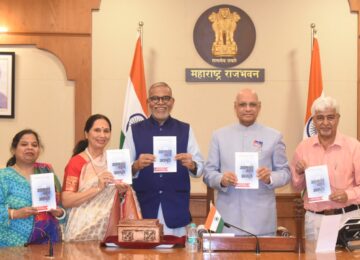Anupama Nair
www.mediaeyenews.com
People are confused about old and new tax regime. So, I am writing an article to clear the confusion and then you can decide to choose the old or new regime. In the year 2020, our Finance Minister Mrs. Nirmala Sitharaman announced a new tax regime with more tax slabs and a lower tax rates. This was a demand made by most taxpayers, however all the deductions and exemptions that were available under the old tax regime was removed. To add more to the confusion, the Finance Minister gave taxpayers a choice between the new regime and existing one, and they had to decide which they would like to opt for. When you add all these factors the instead of the tax laws getting simpler, they are now more complex.
And if you are wondering how to go about figuring out whether you should opt for the new or the old tax regime, this blog answers that question for you. We look at the new regime in detail, its benefits and compare it to the existing tax system.
The new tax regime is different from the old tax regime in two ways — in the new regime, the number of tax slabs have increased, accompanied by lowering of rates in the sub-Rs. 15 lakh range and then all the exemptions and deductions that were being used by taxpayers in the existing regime won’t be available in the new regime.
Under the new system, any income between Rs. 5 lakh and Rs. 7.5 lakh would be taxed at 10 percent, while income between Rs. 7.5 lakh to Rs. 10 lakh would be taxed at 15 percent. This was previously 20 percent on the entire range, and previously, in Rs. 10 lakh+ slab, 30 percent was charged.
The new tax regime is very complicated. Even though, the tax rates are high, there are a lot of ways to reduce your tax liability. Over the years the government, through addition of clauses to the Income Tax Act, has given Indian taxpayers over 70 exemptions and deduction options through which they can bring down their taxable income and hence pay less. It is generally seen that while exemptions are part of your salary, like the House Rent Allowance (HRA) and Leave Travel Allowance (LTA), deductions allow you to lower your tax amount by investing, saving or spending on specific items. The biggest section for deduction is Section 80c through which you can bring down your taxable income by Rs.1.5 lakh. Apart from this, there are several other sections that allows you to avail tax deductions on things ranging from interest on your loans (home and education) to premiums you pay for health insurance.
Now the question arises, whether to go for the old or new regime. Unfortunately, there is no single answer to this. And the culprit again is the complexity of the Indian tax rules.
Experts looking at the reduction in the tax rates, they would say the new system looks better. However, with these cuts, someone with Rs. 7.5 lakh income will have to pay Rs. 25,000 and for those who are earning Rs. 10 lakh income, the tax saving will be Rs. 37,500. However, for these savings, you will have to let go all the exemptions and deductions which might nullify these gains.
If you are trying to figure out whether to choose the old or the new tax regime, it might look complicated, but if you approach it in a systematic way, it is not that difficult to figure out.
All you need to do is:
If you are living on rent, you would be claiming HRA which is the biggest salary exemption one enjoys. Apart from that, other tax-free components include LTA, Food Bill, Phone Bills, etc. All these will become taxable if you choose to shift to the new tax regime.
As a salaried employee, two deductions that you automatically get are standard deduction of Rs 50,000 and your contribution towards your Employee Provident Fund (EPF). In the new regime, you won’t be able to claim these deductions even though you will continue to contribute to EPF. Over and above, you cannot claim deductions against your home loan (if you have one) or insurance policies, which till now has helped to reduce your taxable income.
Now, you combine these exemptions and deductions and minus them from your salary to see what is your taxable income and what it would be if you let go of these deductions. This should be the deciding factor for which regime you should go for.
What we need to understand is the changes introduced do not really make things easier for Indian taxpayers. However, there is one thing you need to be watchful, whether you pick the new or old tax regime shouldn’t decide if you should invest and get insurance. Achieving your life goals and securing your family’s future should be the only reasons you invest and purchase insurance, not the tax benefits you get from them.



























